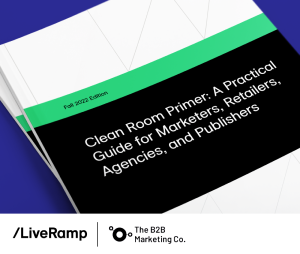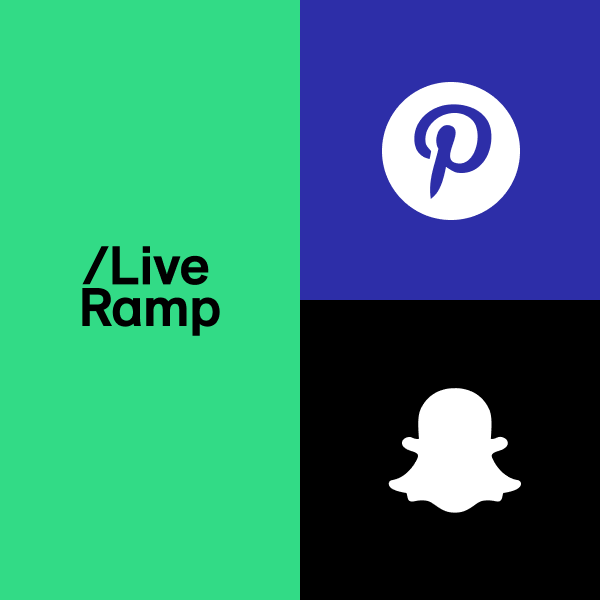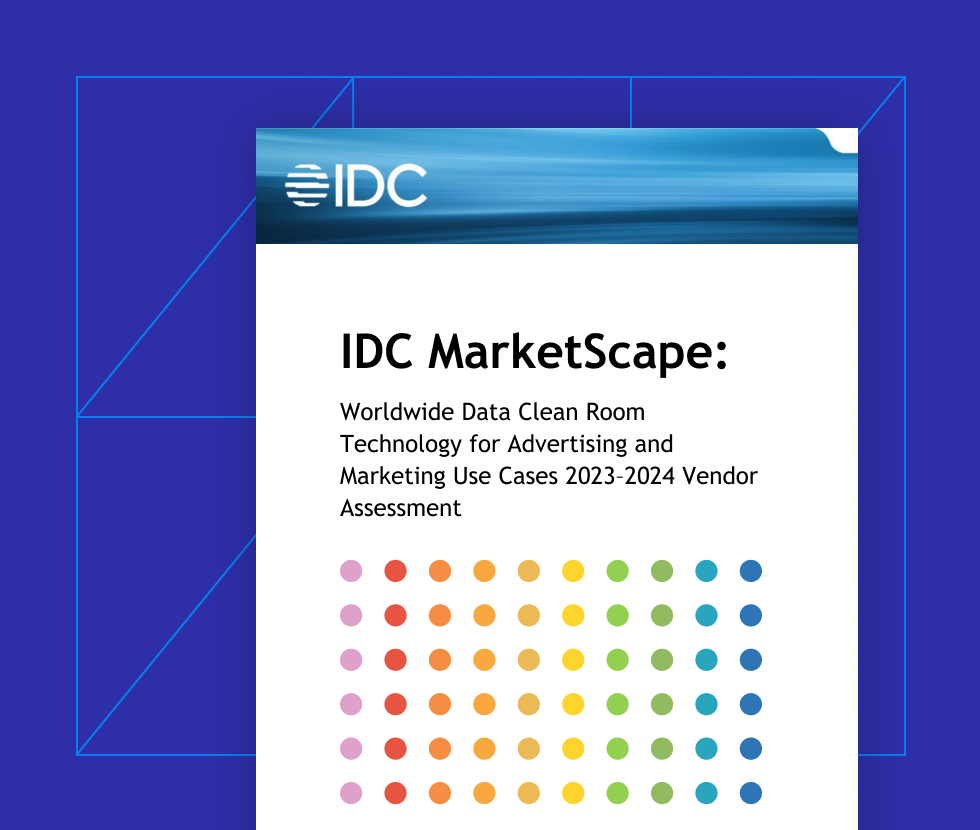What is a data clean room?
In scientific research or manufacturing, a “clean room” is a strictly controlled environment that reduces the level of contaminants that can put sensitive work at risk. A data clean room is very similar, and these digital spaces are now growing in popularity due to organizations embracing digital transformation.
So how do we define a data clean room? Simply put, It is a safe and neutral space for data collaboration and partnerships to exist without either party (or parties) having access to the other’s customer data. A data clean room also embeds privacy-enhancing technologies, such as encryption and differential privacy, so data can’t be used inappropriately while providing data scientists with the ability to leverage data to better plan, activate, and measure across the ecosystem.
Think of a clean room as a worthwhile addition to the data transformation toolbox. One of the key benefits is that the data never leaves the data owner’s control, creating a better balance between privacy and utility. While many use cases are between two enterprises, data clean rooms can also be used across the same enterprise for the same reasons.
How do data clean rooms differ from CDPs and DMPs?
Understanding the distinctions between customer data platforms (CDPs), data management platforms (DMPs), and data clean rooms is important for businesses navigating the landscape of data management and privacy. Let’s take a look at the key differences below.
What is the difference between a CDP and a data clean room?
A CDP is software designed to assist marketers in establishing a unified customer view. CDPs gather consumer data from multiple sources and provide insights for customizing marketing campaigns, segmenting customers, and enhancing overall customer experiences.
A data clean room is a secure and impartial area where organizations can collaborate on data without seeing each other’s personally identifiable information (PII). These rooms have privacy features like encryption to prevent misuse, while still allowing data experts to analyze and use the data effectively.
What is the difference between a DMP and a data clean room?
A DMP is software crafted to store, organize, and decipher customer segments and ad campaign data from various sources. DMPs collect largely second- and third-party data, including anonymously collected data, to craft comprehensive audience profiles and empower advertisers to execute personalized campaigns.
A data clean room is a secure environment where organizations can collaborate and analyze first-party data from multiple sources without exposing directly identifiable personal data. A data clean room prioritizes data privacy and security when activating data for advertising purposes.
How do data clean rooms work?
There are essentially four components to a data clean room.
- The data: First-party data comes from participants like a retailer and CPG.
- Data connection and enrichment process: This is where the datasets from two or more parties are matched on an individual basis and then enriched using third-party vendors. It’s also where an identity graph, which will pseudonymize to an ID that can’t be tied back to a consumer’s directly identifiable personal data, comes into play.
- Data analysis and analytics: Within the data clean room, encrypted data, which can be used for measurement and attribution, is onboarded.
- Marketing activities: The last and most important component is using the output from the data clean room to execute marketing activities, such as audience building, customer insights, determining reach and frequency, campaign analysis, customer journey analysis, and more.
Clean Room Primer
Everything you need to know about clean rooms
Read NowThree reasons data clean rooms benefit marketers
1. Accessing more (and better) data to improve marketing and maximize ROAS
Cookie deprecation is real, and marketers require accurate customer data that won’t be compromiseed by signal loss. With a data clean room, marketers can tap into attribution models leveraging transaction data combined with a publisher or partner’s ad performance, like impressions and clicks to determine the source of conversions. With granular data, a marketer can analyze the reach and frequency of campaigns and take measures to minimize ad fatigue and improve media performance. As the media landscape becomes more fragmented, a data clean room can help overcome the obstacles each new or deprecated channel brings.
2. Audience insights to build better audiences
Customer data is gold but has become increasingly harder to obtain due to new privacy regulations. A data clean room enables marketers to partner with multiple trusted sources to enhance and enrich their data to create look-alike models on a granular level. This can then power segmentation based on consumer behavior, purchase history, habits, etc., to help marketers deliver more relevant messages via the most effective channels.
3. First-party data partnerships
Peanut butter and jelly. Penn and Teller. Ticketmaster and Spotify. Three examples of things that just go together and make sense. With a data clean room, a marketer can partner with anyone in a safe and permission-based environment to propel its brand in previously impossible ways. For example, if you’re getting ready to launch a new product, the right data partnership and datasets can help you understand the category better and drive better outcomes. First-party data partnerships benefit not only the marketer, but also product development, customer service, and other teams across an organization.
Types of data clean rooms
As we’ve noted, data clean rooms aren’t new. The walled gardens have had them for several years and have proven their effectiveness at improving advertising performance through data collaboration between an advertiser and its platforms. This approach helps advertisers check for inconsistencies to address issues such as frequency capping and audience suppression, preventing over-serving ads to the same people or households. With the proliferation of channels, measurement and attribution become even more critical to optimizing advertising spend.
Neutral third-party data clean rooms
More data clean rooms are emerging. In addition to those managed by the platforms, there are also neutral third-party data clean rooms, like the LiveRamp Clean Room, powered by Habu, which allows for seamless integration of data across advertising partners, clouds, and walled gardens (including measurement within them) – streamlining insight generation and driving faster, more efficient decision-making.
Having a safe place for your data scientists to experiment is great, especially if it’s where the data already lives. However, data clean rooms are only as valuable as they are usable. It’s important to empower a diverse user base in order to make the most of a data clean room.
The LiveRamp Clean Room, powered by Habu, offers a tailored user experience to meet the needs of both non-technical business users through insights templates and generative AI, and data-savvy technical users through advanced querying and methodological application tools – accelerating actionable insights for business users while providing the analytical depth that data scientists require.
Maximize Business Impact
Elevate business outcomes with Pinterest and Snapchat through Data Clean Rooms
Watch WebinarData clean rooms for enhanced privacy and performance
Today, data clean rooms can provide a safe and secure environment to unite disparate datasets more easily and uncover more business insights than ever. While data privacy concerns are a solid reason to use a clean room, there are other benefits that will help your businesses achieve more from your investment in the long term – that is, if you’re choosing the right type of clean room. After all, the ultimate goal is to create value for your business.
To achieve better business outcomes, your data clean room must be rooted in privacy protection and provide the tools that deliver results for marketers. An enhanced data clean room with embedded people-based identity, measurement, and insight applications that are also connected with leading activation channels can help you build deeper partnerships and network your sphere of influence.
Examples of data clean room use cases for retailers
Suppose you already have your data structured and taxonomized, and you want to make it available so that you can start generating revenue. In that case, you don’t need a data clean room because you can push your audience segments through different data marketplaces. The caveat is that you are competing with at least 150 data providers trying to go after the same media dollars. This off-the-shelf capability doesn’t provide the right kind of value for your own datasets. To improve the value of your data and start generating incremental high-margin revenue streams for yourself, a clean room can really help.
For example, most retailers today have a retail media business focused on owned and operated properties. One of the main objectives is to improve yields on a retailer’s existing inventory, and the best way to do that is by leveraging a clean room and allowing CPG brands to do overlaps and identify unique audiences that they would like to activate across a retailer’s owned and operated web properties. That extra step allows a retailer to bundle its data and media together with the use of a data clean room. This increases the value of its inventory and owned and operated operations.
Further, to provide audience extension (where a retailer is taking its datasets and making them available or using them outside their own four walls), having access to clean rooms can provide very unique capabilities, which include both simple and advanced audience building capabilities along with measurement, which CPG brands covet.
Data clean rooms aren't just for retailers
While retailers and brands are great examples of how data clean rooms can create better business outcomes, just about every vertical can benefit from leveraging a data clean room with the right partners. Here are a few examples:
Utilities
Consider the growing market for new smart-home energy products and the data utilities have on consumer consumption. This gives them a competitive advantage for creating and marketing a variety of products and services. For example, a data clean room can enable collaboration between the utility and electric vehicle manufacturers to determine optimal charging point facilities.
Healthcare
An example of how data clean rooms can help in the healthcare sector is their use to provide critical information to the medical community, pharmaceutical companies, governments, and the world population during COVID-19. Data clean rooms strike a balance between public health and privacy with data collaboration without exposing individuals’ private data.
Financial services
When it comes to financial data, privacy and security are two of the most significant issues that face the industry. The level of PII and fallout from a data breach can be devastating to both individuals and institutions. Data clean rooms can provide a safe and secure environment for the financial services industry to reduce risk when collaborating internally and externally. They can also be used across the industry to weed out fraud.
Entertainment
From streaming services to cinemas, concert and sports venues to theme parks, and beyond – this industry can capture consumer behavior and purchases in ways other industries can’t. A data clean room can help unlock the value of their data through partnerships with music labels, production studios, etc., by providing unique audiences and signals for better planning, activation, and measurement.
Travel and hospitality
Hotels and airlines have unique customer data at scale and already embraced media networks and data clean rooms to increase revenue and partner with brands to enhance their offerings, differentiating themselves from their competition.
Mobile apps
Mobile publishers face a lot of competition for time and eyeballs, from app awareness to install and engagement to long-term stickiness. As with many mobile apps, the potential for the amount of data earned from active users is significant and valuable. Consider that mobile publishers often have several different games with user activity across two or more of them. This increases the amount of data that can be used to draw insights and provide areas of optimization, and, when safely shared with partners via a data clean room, it can bridge on- and offline worlds.
Data clean room challenges
While data clean rooms offer many benefits, there are a few key challenges to getting them up and running, including:
Getting data in a usable state
To use a data clean room, you need to get your data house in order. That’s not a quick or easy task for many organizations, especially if that data lives in silos.
Finding the right partners
Choosing a data clean room and partner(s) to work with can take time even if you have full buy-in from various members of the organization. As mentioned, data clean rooms aren’t just for marketing.
Privacy and security concerns
Data clean rooms and data collaboration go hand-in-hand. Not every organization will feel comfortable revealing data that may be proprietary, such as transactional data from online and offline channels. Educating different governance teams can take time.
Integration with other tools
Most brands’ data science teams will be comfortable navigating the tools needed to power analytic tasks, from lead scoring to journey modeling to channel performance measurement. Since data clean rooms must create a protected environment to enable the discovery of needed insights without allowing the exposure or re-identification of consumer data, it creates restrictions that often prevent access to other tools to manage the safety of the data analytics.
Going Beyond the Data Clean Room
Listen to our experts discuss Data Clean Rooms in this on-demand webinar
Watch NowWhat to look for in a data clean room
So how can you find a data clean room that delivers these outcomes and also better customer experiences? Here are the data clean room “musts.”
A data clean room must have a deterministic omnichannel approach to identity
Enhanced privacy capabilities are often the first reason to gravitate toward a data clean room. Privacy-enhancing technologies (PETs) enable companies to analyze data without it having to be exposed. However, the key to success for data clean rooms is to provide modular privacy-enhancing technologies so customers can leverage the required level of privacy thresholds when collaborating with their partners. In addition, having a deterministic approach to identity and matching is also key to ensuring better collaboration. Without deterministic IDs and matching, the outcomes of collaboration can lead to inaccurate results.
Leveraging an interoperable identity framework like LiveRamp RampID can help you not only measure effectiveness more accurately but also drive personalized experiences across omnichannel touch points. When it comes to measurement, the right data clean room provides similar capabilities as walled gardens, such as:
- Matching impression data to transactions to deliver conversion and sales lift reporting
- Enabling multiple partnerships for multi-touch attribution
- Incorporating TV partners to plan omnichannel campaigns better
A data clean room must answer the right questions
A data clean room would be moot if it didn’t enable easier data collaboration within the privacy-conscious space. Once the data is accessible, clean rooms should also provide additional capabilities to make collaboration easier and simpler. These include:
- Helping build and reconcile an organization’s own first-party datasets to support first-party graphs
- Ensuring organizations are bringing datasets into a unified taxonomy to support easy collaboration
- Pre-building queries across datasets to answer key business outcome questions without a heavy lift from both parties
- Embedding analytics dashboards to ensure granular data can be easily leveraged to create better audiences at scale
- Embedding measurement protocols to automatically and continuously measure the effectiveness of collaborative campaigns
A data clean room must enhance personalization
Data is the key to great customer experiences, and a data clean room can help unlock those experiences.
Let’s use frequent visits to your neighborhood coffee shop as an example. By the end of the first or second week of daily visits, you would likely expect a more personalized experience from your regular barista, given they would know your specific preference for coffee. If nothing else, you would hope to be recognized as an individual vs. a random customer. You might even get a pastry on the house as a thank-you for being a loyal customer.
Another example is a retailer with transaction data that tells you what customers are buying, how much they are buying, and how often. That retailer could build audiences that are attractive for CPGs who may be first-party data poor. This is a win-win scenario for both parties since the brand would achieve better targeting, reach the right audiences, and reduce advertising waste. Meanwhile, the retailer (in this case, acting as a media publisher) could improve yields and deliver better customer experiences.
When appropriately leveraged in a privacy-centric manner, data can enhance the customer experience, ensuring that brands can recognize these preferences and deepen relationships with existing customers for increased brand loyalty and awareness. A data clean room delivers the ability to create exceptional customer experiences by helping activate these insights across marketing applications.
A data clean room must be flexible and interoperable
An enhanced data clean room should make it safe and easy to connect data wherever it lives and use whatever tools the marketer needs to achieve its goals. Things can get complicated when there are point solutions with different setups and parameters used by a brand or agency with multiple partners. Data clean rooms should work where you (and your partners) work. This means they should be able to plug into (and measure performance across) all of your advertising partners, including walled gardens, TV, CTV, RMNs, platforms, and more – capabilities possible with the LiveRamp Clean Room, powered by Habu.
The future of data clean rooms
Organizations will increasingly adopt data clean rooms in the coming years, but the technology will evolve with customer requirements. As we already see, customers are migrating their data assets within their cloud data warehouses, and customers will want the collaboration to occur within their data warehouses’ confines. Data clean rooms will become an integral part of the cloud infrastructure going forward and deliver value not only for marketing use cases but use cases to support all enterprise functions. In addition to becoming embedded in the cloud, we expect the clean rooms to provide modular privacy controls so organizations can feel comfortable with the privacy and security frameworks used in collaboration.
Leverage data clean rooms for better business outcomes with LiveRamp
Discover the power of LiveRamp’s data collaboration platform. No matter which type of data clean room you choose for your data collaboration needs, it’s fundamental to ensure that it will help you deliver the best business outcomes without sacrificing the deep customer relationships you seek to grow and solidify as you develop a better understanding of your customers.
See why LiveRamp was named a Leader in the IDC MarketScape: Worldwide Data Clean Room Technology for Advertising and Marketing Use Cases 2023-2024.
Learn more




